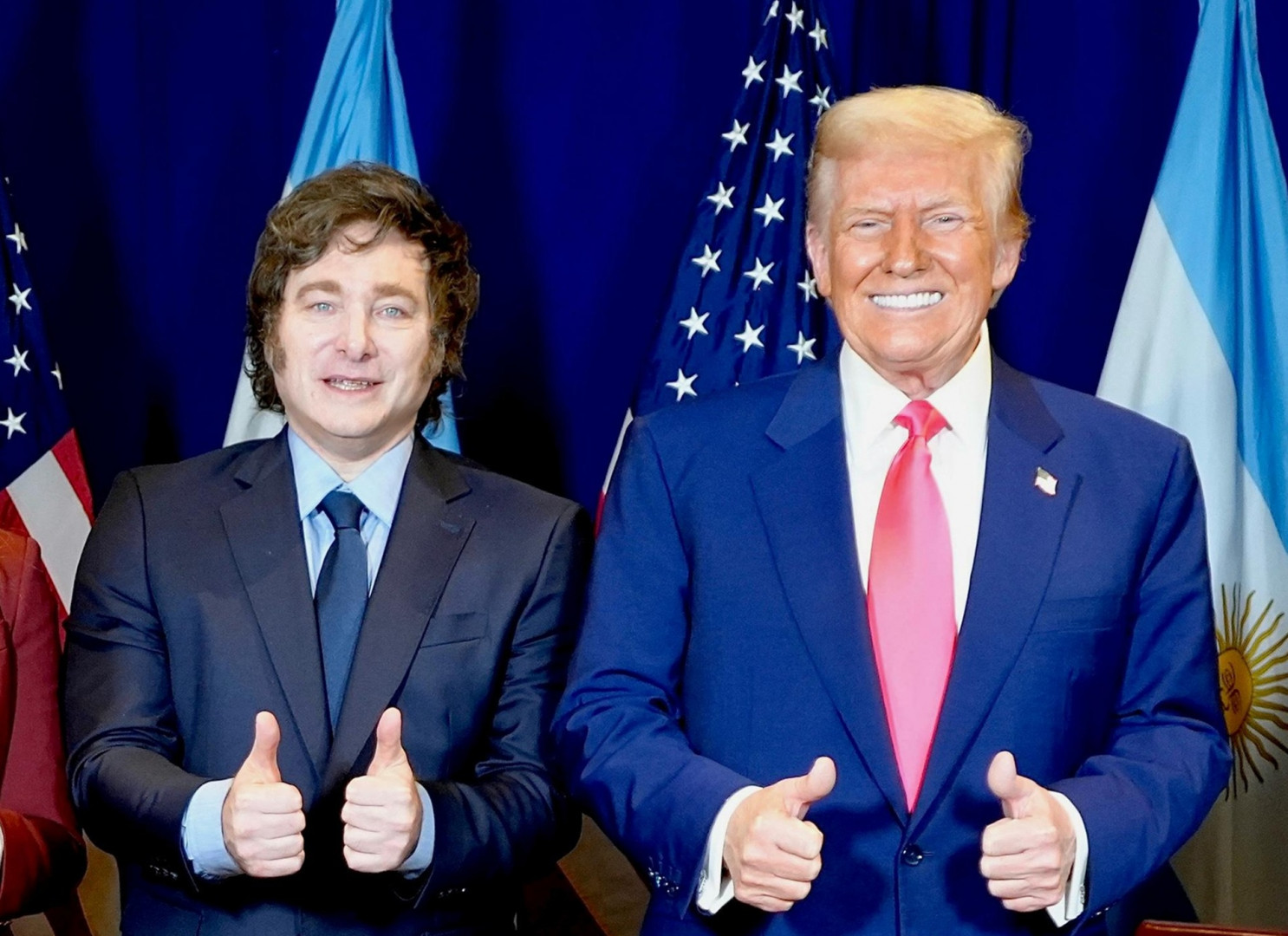Some countries would see their tariffs increase, but in Argentina’s case, the average tariff would need to be reduced to 2.5%. Otherwise, the country would face a 148% increase in the average tariff imposed by the U.S. on Argentine products.
💬 Milei’s Commitment to a U.S. Trade Deal
“I want to take this opportunity to announce that Argentina wants to be the first country in the world to join this reciprocity agreement proposed by the Trump administration in trade matters. In fact, if we were not restricted by Mercosur, Argentina would already be working on a free trade agreement with the United States,” said President Javier Milei in his February 22 speech at the Conservative Political Action Committee (CPAC) event, on the same day he met with Donald Trump.
Milei later reiterated his desire to negotiate a Free Trade Agreement (FTA) with Washington before the Argentine Congress. Trump, in turn, praised him, calling him a “great leader.”
📌 Challenges and Legal Barriers
- Trump currently lacks congressional authority to negotiate FTAs.
- Argentina is bound by Mercosur, a customs union with a common external tariff, which Milei has expressed willingness to leave.
- Any agreement would still require legislative approval in both countries.
📊 The Cost of Reciprocity for Argentina
According to Maximiliano Gutiérrez, a researcher at the IERAL of the Fundación Mediterránea, the reciprocal tariffs proposed by Trump would force Argentina to reduce its average import tariff on U.S. goods by 60%, from 6.2% to 2.5%.
His analysis, based on World Integration Trade Solution (WITS) data from the World Bank, suggests that while some countries could increase their tariffs, others—including Argentina—would need to lower them to maintain trade with the U.S.
Countries That Would Need to Lower Their Tariffs:
- Argentina, Nigeria, India, China, Thailand
- Brazil, Mexico, Chile (Latin America)
Countries That Could Increase Their Tariffs on U.S. Goods:
- United Kingdom, Netherlands, Belgium, Switzerland, France, Spain, Italy
- Peru, Uruguay (Latin America)
- Vietnam, Indonesia (Asia)
Potential Consequences of Trump’s Tariff Policy
📌 U.S. Tariffs on Aluminum and Steel
- The 25% tariff on aluminum and steel imports into the U.S. now applies without exemptions.
- Argentina, the 7th largest aluminum supplier to the U.S. in 2024, is now subject to these tariffs—unlike in 2018, when it was exempt.
📌 Trump’s View on VAT as a Trade Barrier
- Trump has suggested that countries applying a Value-Added Tax (VAT) could be penalized, viewing it as a trade barrier—a claim disputed by economists.
📌 U.S.-China Trade War Escalation
- The U.S. imposed a 10% tariff increase on $435 billion worth of Chinese imports.
- China retaliated with tariffs of 10-15% on $14 billion worth of U.S. goods and export controls on critical metals.
📌 Potential U.S.-EU Trade Conflict
- Trump has hinted at 25% tariffs on EU imports.
- European Commission President Ursula von der Leyen has promised a “firm and proportional” response.
🔎 What’s Next for Argentina?
Gutiérrez warns that Milei’s relationship with Trump could be key in determining how these policies affect Argentina. While Trump’s approach is seen as extreme mercantilism, it might serve as a starting point for negotiations. However, excessive tariff use could ultimately harm the U.S. by pushing the EU and China into closer alignment against American trade policies.







Leave A Comment